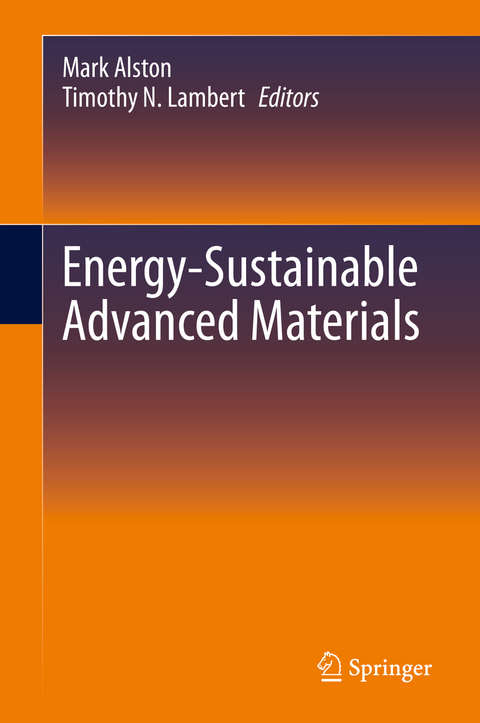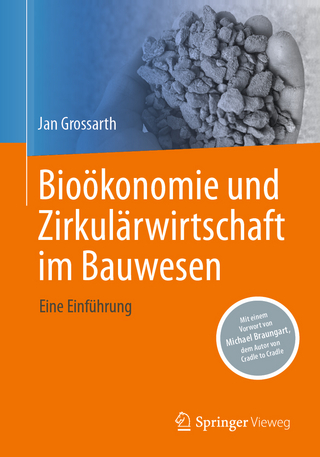
Energy-Sustainable Advanced Materials
Springer International Publishing (Verlag)
978-3-030-57491-8 (ISBN)
- Advances critical technical and commercial objectives for novel high energy density materials;
- Evaluates operational material models for optimizing energy capture that are integrated by configurations as a system;
- Illustrates utilization of material life cycle assessment for high energy outputs generators for sustainable materials.
lt;p>Dr. Timothy N. Lambert is a Distinguished Member of the Technical Staff in the Department of Photovoltaics & Materials Technologies at Sandia National Laboratories, Albuquerque, New Mexico, where he engages in basic and applied research. His current research efforts include developing new electrocatalysts for the oxygen reduction and evolution reactions and developing chemistries, electrodes and components for low cost alkaline grid storage batteries. He has co-authored over 65 peer-reviewed papers and is co-inventor on 5 issued patents with several more pending. He received a B.S. in Chemistry from University of Texas @ Austin in 1996, a Ph.D. in Organic Chemistry from New Mexico State University in 2001 and was a Postdoctoral Researcher/Visiting Scientist at the University of Notre Dame/Walther Cancer Research Center prior to joining Sandia. He is currently a member of the NAATBatt International Committee on Zinc Batteries, the Center for Integrated Nanotechnologies User Executive Committee, The American Chemical Society, The Materials Research Society and The Electrochemical Society.
Dr Mark E Alston is an Assistant Professor at the University of Nottingham, Facility of Engineering since May 2018 where he is a member of Fluids and Thermal Engineering research group. Prior to this he was a lecturer while earning a PhD part-time at the University of Salford Manchester, UK. Mark's current research area is solving multi-physics problems to modulate elevated high temperatures by microfluidic novel systems for examining and measuring thermal conductance across the interface of a composite. This has led to several articles in Nature Scientific Reports and collaborations with industry including BASF SE Advanced Materials and Systems Research in Ludwigshafen, Germany and composite manufactures partners supporting him in the US and UK. Mark works as a consultant for UKRI Innovate UK in smart materials and is a member of American Physical Society. Research outreach has led to a number of media interviews; American Society of Mechanical Engineers (ASME), Polymer Composite can Regulate Its Own Temperature, February 1st, 2019 - American Physical Society (APS), Physics Buss; Nov 15th, 2018 - Design News, Material & Assembly Aerospace Materials, Bio-Inspired Materials Keeps Cool at High Temperature, December 5th , 2018.
lt;p>I. Principles. Environmental boundaries that set the functional parameters that influence material behaviour, by modulating strategies for regulation of energy and matter.
Chapter: Climatic behaviour
II. Methods. Enabling Energy Technology Platforms - BioLogically inspired material science
Chapter: Bio-inspired engineering
Chapter : Material Science to Manufacture Engineering, Dr Kalina Raskin, CEEBIOS, raskin.k@ville-senlis.fr
III. Application. Energy capture and storage to ultimately lead to desired morphology in advanced materials characterization.
Chapter: Nanostructured Energy storage
Chapter: Micro-Nanostructure composite materials
Chapter: Translucent material composites
Chapter: Optimal microchannel planar reactor as a switchable infrared absorber
Chapter: Carbon-based Conductive And Flowing Dispersions For Redox Flow Batteries
Chapter: Adaptive materials succession into performativity component systems
Vision. Automatous materials to close the energy consumption gap between well being of citizens, to energy resource generation. Global sustainability in the protection of Earth nine planetary boundaries.
Chapter: Global Planetary Sustainable Energy
| Erscheinungsdatum | 14.12.2020 |
|---|---|
| Zusatzinfo | VII, 177 p. 53 illus., 48 illus. in color. |
| Verlagsort | Cham |
| Sprache | englisch |
| Maße | 155 x 235 mm |
| Gewicht | 488 g |
| Themenwelt | Naturwissenschaften ► Biologie ► Ökologie / Naturschutz |
| Technik ► Architektur | |
| Technik ► Maschinenbau | |
| Schlagworte | Bio-inspired engineering • heat transport • microfluidics • self-optimization • Solar modulation • solar radiation • Switchable infared absorber • Thermally functional • Transition temperature • Translucent composite material • Transparent composites • Vasculature |
| ISBN-10 | 3-030-57491-1 / 3030574911 |
| ISBN-13 | 978-3-030-57491-8 / 9783030574918 |
| Zustand | Neuware |
| Haben Sie eine Frage zum Produkt? |
aus dem Bereich


